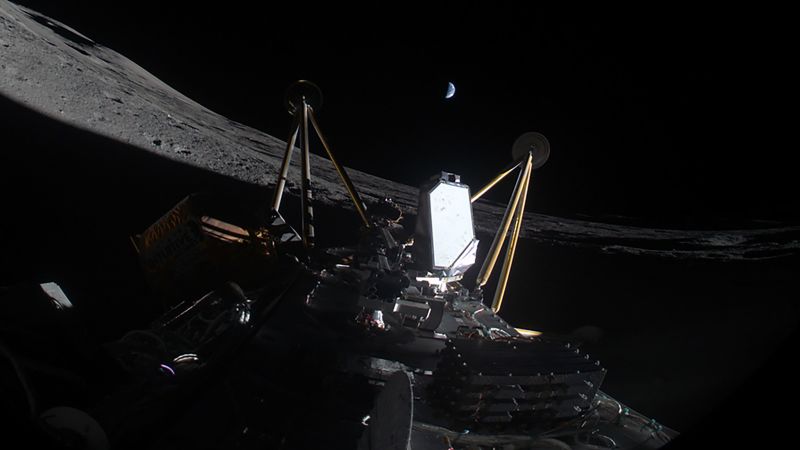In an exciting development for lunar exploration, Intuitive Machines, a Houston-based aerospace company, made headlines with its much-anticipated Athena lander. The mission aimed to achieve a groundbreaking water-hunting endeavor at the moon’s south pole. However, just a day after successfully landing on the lunar surface, the Athena lander powered down unexpectedly. This led to a setback for the mission, similarly reminiscent of an earlier attempted landing that faced its own challenges.
Athena, which was designed to function for approximately ten days, was tasked with various critical objectives, including exploring the Mons Mouton plateau, situated roughly 100 miles (160 kilometers) from the lunar south pole. Unfortunately, shortly after its landing, photographs confirmed that the lander had rolled onto its side, impeding its functionality. Despite this unfortunate orientation, Intuitive Machines expressed its intent to analyze the data collected during the mission. In a statement, the company outlined the technical difficulties experienced by Athena, emphasizing the improbable chance of recharging given the solar panel orientation and the extreme temperatures within its surrounding environment.
Even with these hurdles, the mission recorded a notable first—Athena became the first spacecraft to reach the furthest southern point on the moon, which highlights the mission’s significance despite its challenges. Moreover, it was noted that the lander successfully operated briefly post-landing, managing to send back valuable data that accelerated various program milestones, including NASA’s PRIME-1 suite project. However, it remains unclear whether the PRIME-1 drill, intended to excavate lunar soil in search of water, was operational or able to collect essential data.
The lander also hosted a four-wheeled rover developed by Lunar Outpost, a Colorado-based company, which was expected to deploy approximately six hours after landing. Yet, due to the circumstances surrounding Athena’s orientation, the rover’s deployment was ultimately unsuccessful. Despite these setbacks, NASA and Intuitive Machines officials reported that the science and technology instruments aboard Athena had operated effectively during the transit to the moon and in lunar orbit before touchdown. Intuitive Machines’ Chief Technology Officer Tim Crain noted that the lander captured critical close-up images of the moon’s south pole, which are expected to greatly enhance scientific understanding of the area.
The challenges faced by Athena resonate with experiences from Intuitive Machines’ previous lunar mission, where another lander named Odysseus encountered similar operational difficulties after also landing on its side. This unfortunate trend has prompted discussions about the inherent difficulties of lunar landings, especially in regions featuring uneven terrains like the moon’s south pole. Additionally, it was revealed that the Athena lander deviated from its intended landing site, concluding its journey about 820 feet (250 meters) away from the target zone—a significant detail not initially disclosed post-landing.
Athena’s development stemmed from NASA’s Commercial Lunar Payload Services program, which aims to enhance innovation in lunar exploration through relatively cost-effective contracts with private sector entities. The program has attracted various companies looking to capitalize on the booming market for extraterrestrial exploration.
At a recent press conference, Nicky Fox, the associate administrator for NASA’s Science Mission Directorate, discussed NASA’s ongoing commitment to innovation and the continued exploration of the moon, alongside other projects in the pipeline, including the Blue Ghost lunar lander from Firefly Aerospace. This masterclass in collaboration and innovation seems to navigate the complexities of space exploration while fostering new partnerships with the commercial sector.
Moving forward, Intuitive Machines plans to conduct a methodical review of the Athena mission over the next 30 days, referred to as a “hot wash.” This analysis aims to identify both successful elements and challenges encountered, culminating in recommendations for future endeavors. The company is also contemplating a third landing mission, designated IM-3, which may evolve as they are currently pursuing a contract for satellite systems to facilitate data relay from the moon. As lunar exploration becomes increasingly collaborative, the insights gained from these missions could pave the way for future successes in human space endeavors.












